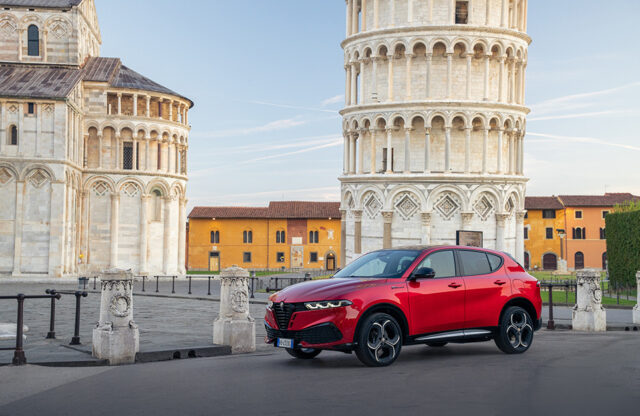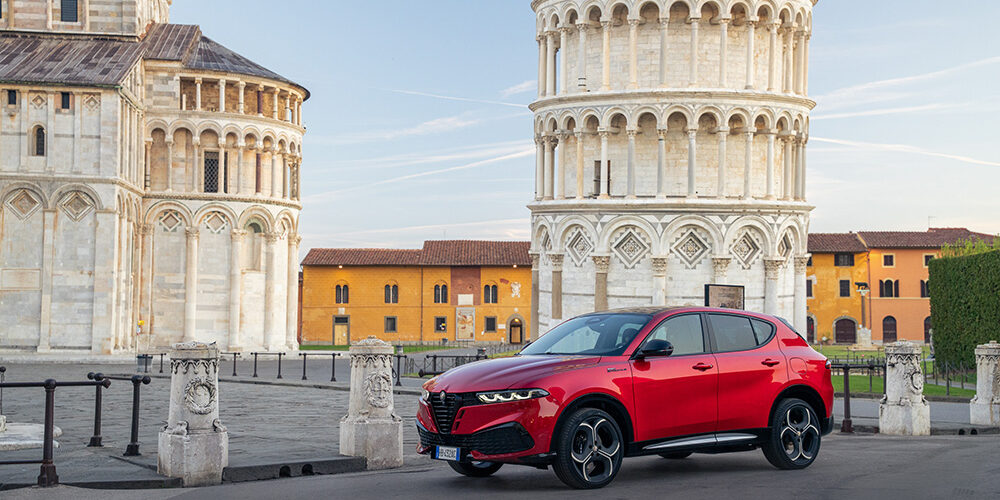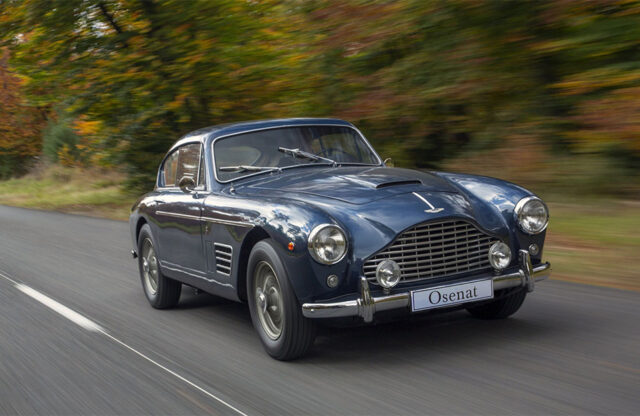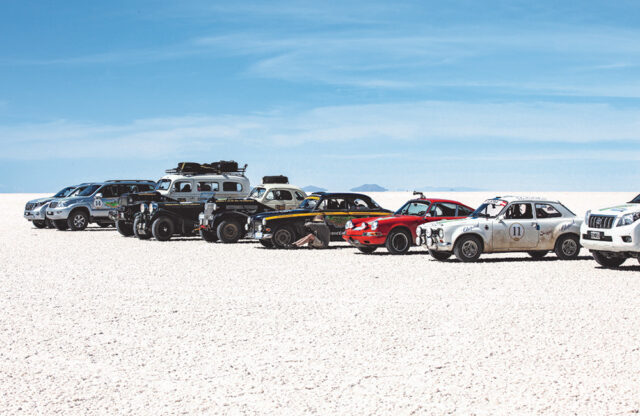The remixed Alfa Romeo Tonale makes its debut at a time when the future of its maker is in doubt (again); in the run-up to the car’s media launch in Pisa, much of the talk was about the company being sold.
Yet Alfa Romeo categorically denied that it was up for grabs when introducing the new Tonale, a car that had represented a return to the firm’s European heartland in tastes. The Stelvio and Giulia, as well received as they were, had America in their sights; they’ve also been given a reprieve from the end of production until 2027 at least. The Tonale is, in theory, closer to what Europe wants – small-capacity ICE engines, with a variety of hybrid assistance. And, at the moment, a compact crossover.
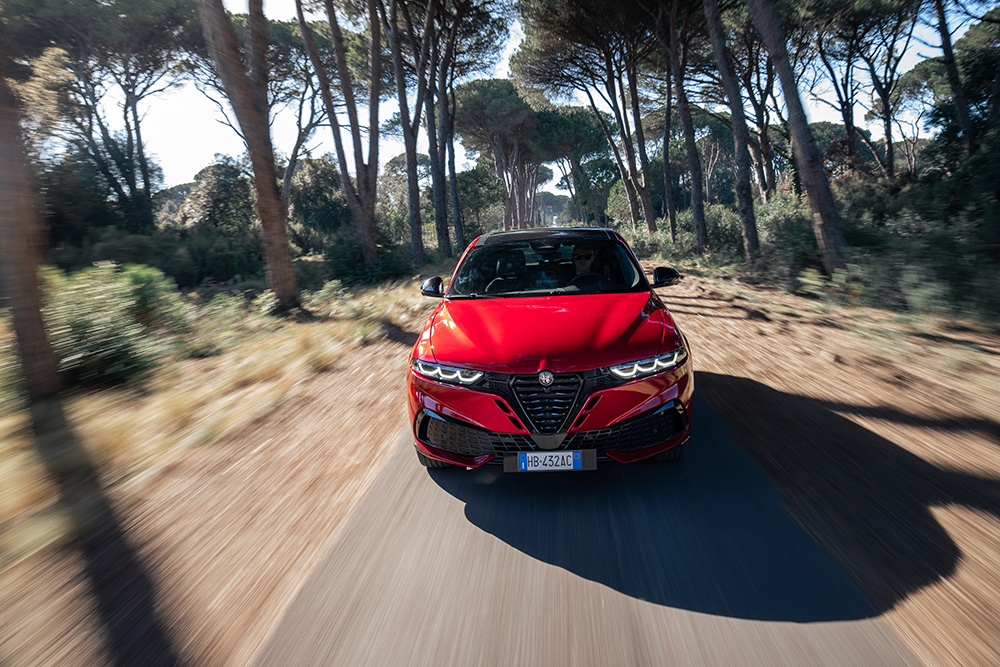
I say in theory, because Tonale sales haven’t been great – launched in 2022, it’s only just ticked over 100,000 sales. Instead, it is the Junior (reviewed by Magneto here) that’s helping to turn around Alfa’s sales; in European markets, there’s been around 35 percent growth year on year. The Tonale’s problem has been the lukewarm response to the early cars, because they simply didn’t drive like Alfa Romeos – whether classic or modern classics.
This has been a charge made by the mainstream press against Alfas in recent times, with everything pre-Giulia/Stelvio back to the 105 series seemingly written off. There are some short memories – 2025 marks 30 years since the 16v Twin Spark engines were brought on stream, with the 916 GTV leading the charge. They may have been front-wheel-drive platforms, but the 916 GTV, 156 and 147 drew plaudits from reviewers, and sales were strong. Indeed, in 2001 Alfa Romeo sold more than 21,000 cars in the UK alone. Twenty years later, sales were a tenth of that.
Could the Tonale be the car to restore that mass-market appeal?
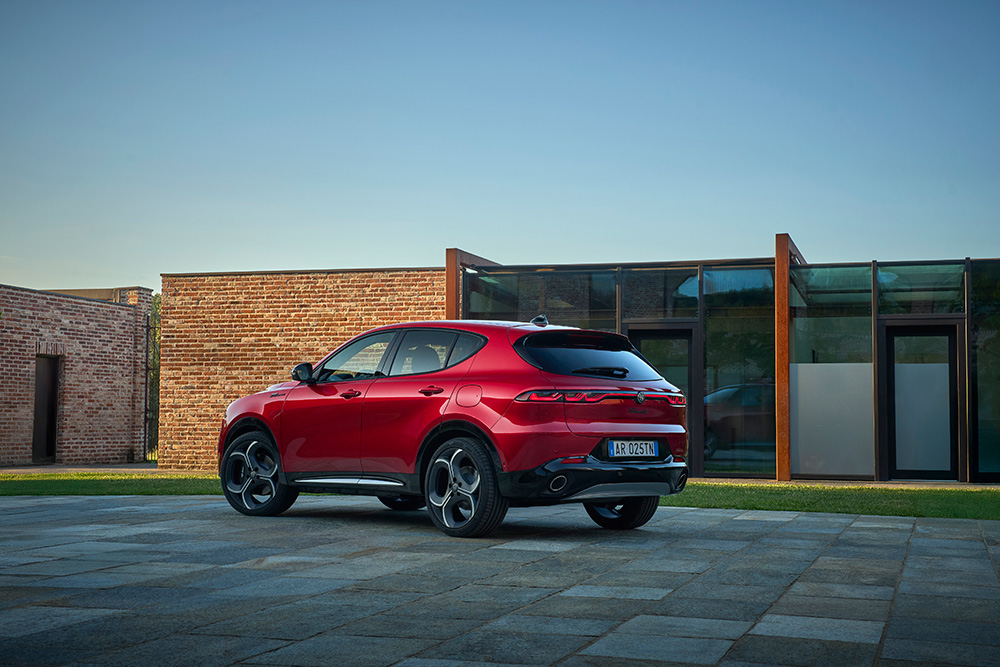
The 156/147/GTV 916 era was a high watermark for Alfa, in terms of its mainstream proposition. Even the base-model cars were engaging to drive, with passive rear steer giving the feeling of rear-wheel drive. This was augmented with two fine, high-revving, naturally aspirated engines – the aforementioned Twin Sparks, plus the sonorous, bass-rich Busso V6.
That was 30 years ago, though – there’s no chance of naturally aspirated engines screaming to 7000rpm in shopping carts. But the handling chops? They’re still up for grabs. However, as we sat through the presentation, Alfa’s team sought to redefine ‘sporty’ from car performance, as more of a lifestyle choice. Hmm! That didn’t bode well.
It also brought to mind an anecdote relayed to me by a German journalist who knows the upper echelons of the manufacturer well. Alfa made a big play about the original Tonale being put together by the team behind the thunderous Giulia GTAm, and that it would be class-leading in handling. When it wasn’t, certain Alfa Romeo suits were purple with rage, hence the original delays.
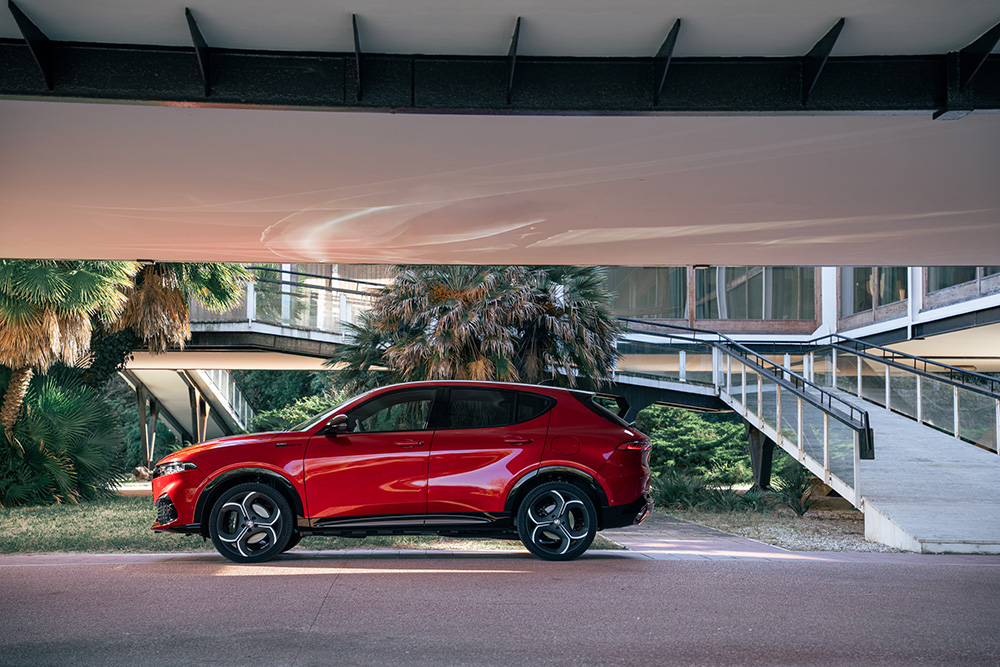
That was then, this is now – so what’s the major change? The key thing under the skin a wider front track for greater corner stability and grip. The integration between the hybrid and ICE unit has been made smoother – hopefully ironing out the jerkiness of the original car and in the process smoothing out some awkward handling complaints.
The other big change – in terms of Alfa Romeo tradition – has been the re-siting of the numberplate to a central position. “With the new European regulations we had to move the numberplates because they can no longer be angled more than 15º on a single curve,” explains exterior designer Estelle Tabaczek. “Keeping them where they were would have made the design look bulky and awkward, so instead we placed them at the centre of the car. That change also gave us the chance to rebalance the proportions and add a stronger sense of horizontality to the overall shape.”
The wider track also presented opportunities to refine the design. “We were able to offset the wheels by about a centimetre in total,” Estelle explains. “On the previous generation the wheels sat slightly too far inside the arches, but now the stance looks far better balanced.”
Other changes include new 19in and 20in rims, two new interior treatments (duo-tone leather/Alcantara and red leather) and three new colours. Engines come in 130bhp diesel, 175bhp petrol/mild hybrid and 280bhp petrol/full hybrid form. It was the latter that I’d be driving around a damp Tuscany.
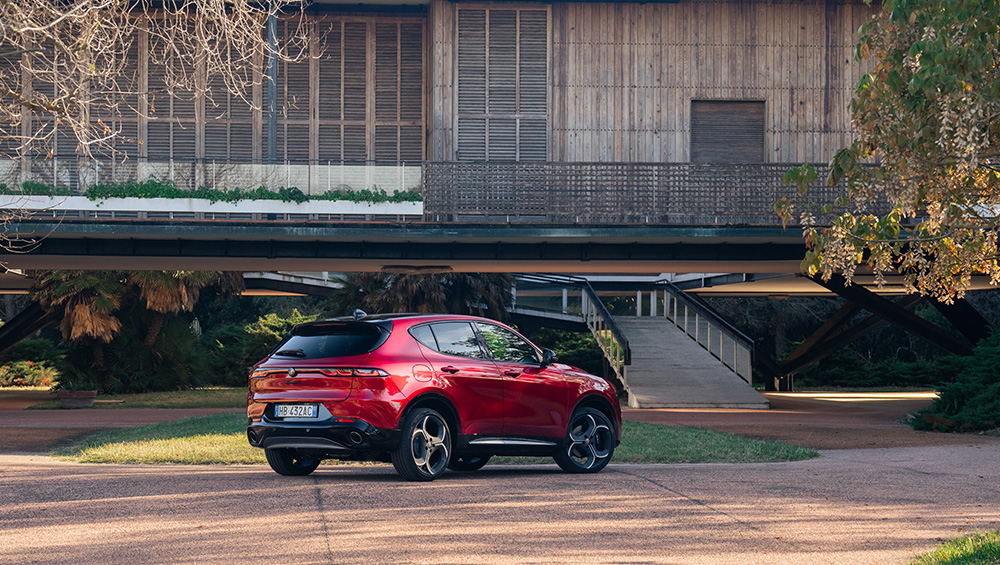
From the outside, the Tonale certainly looks the part. While the hardcore Alfisti would probably prefer a two-door, a Spyder or a hatchback, even a small saloon, the reality is that crossovers are the bread and butter that, if successful, allows for the developement of more historically Alfa-related cars. It’s a pleasing shape, and far more distinctively Italian than the Junior; flowing flanks, a prominent Scudetto and a pleasing mix of muscularity at the front. I’m not a crossover fan, but the Junior is certainly distinctive in a segment of also-rans.
Inside, material quality appears to be much better than seen in recent Italian Stellantis output – I’m told this was an order directly from the top. Haptics are back – the screen isn’t too intrusive and there’s just one easy-to-reach virtual button to switch the nannying safety warnings off. All in, the screen is easy to use; there’s also a bank of physical switches below that evoke memories of the 164. They seem robust; only the wiper-speed switch and the parking brake button feel a little too lightweight.
The vent controls are a little bit too ‘flappy’ as well, but overall it does feel premium inside. The good news is that the aluminium gearshift paddles remain and they feel great to use; the rotary gear selection device is a nice touch, although again, a little too plasticky for my tastes; it would have been nice to have aluminium there, too.
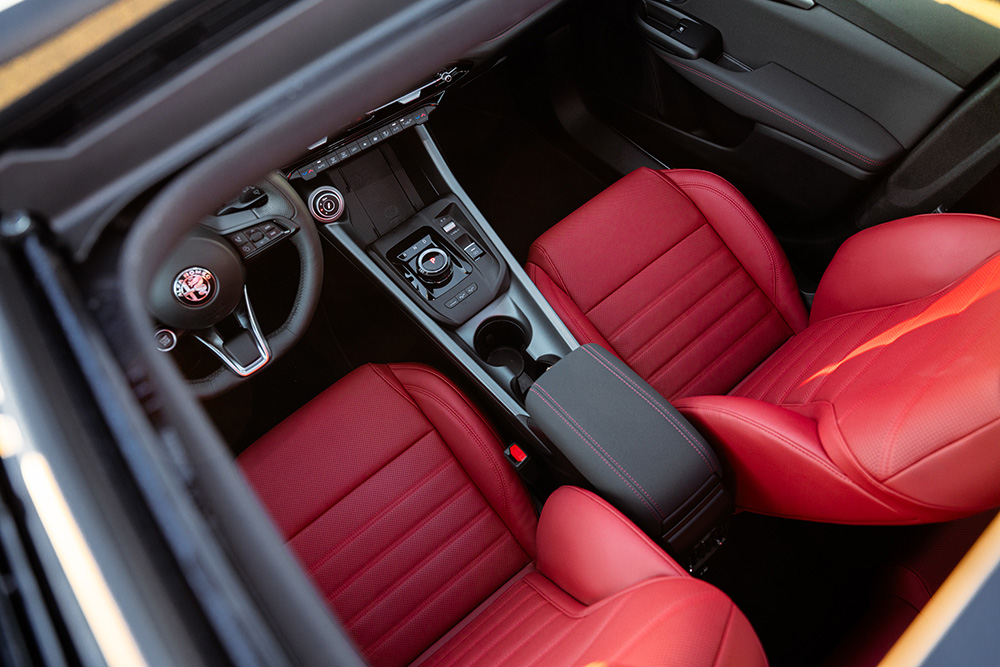
The leather and Alcantara seat on my test car was comfortable, and while it didn’t grip like a bucket seat on the twisty sections – this is, after all, a crossover – it did a good job of not launching me into the footwell. The seats have eight-way electrical adjustment in the front and four-way electrical lumbar support, but 6ft 5in me did have to lean back a fair bit to avoid hitting my head on the roof. Still, being perched so high reminds me of my 145 Cloverleaf, some things never change… In its furthest-back position there was plenty of space for smaller adults, particularly in the legroom department.
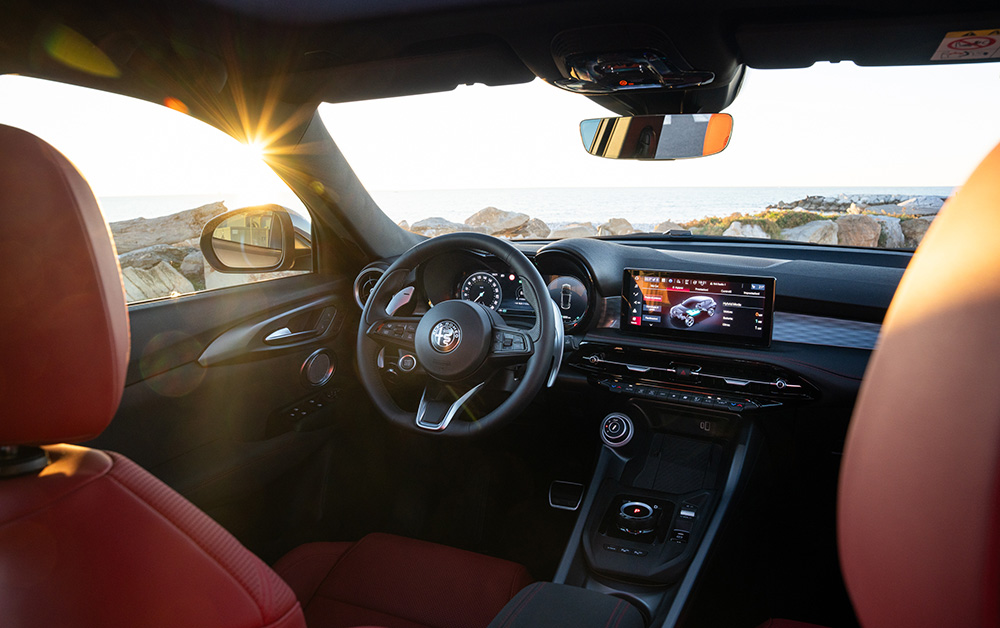
The updated Tonale line-up starts with the standard version, fitted with 17-inch diamond-cut Aerodinamico alloys and black cloth upholstery. Move up to the Ti and you gain gloss black window surrounds, front seats with that eight-way electric adjustment and lumbar support, plus aluminium paddle-shifters behind the wheel.
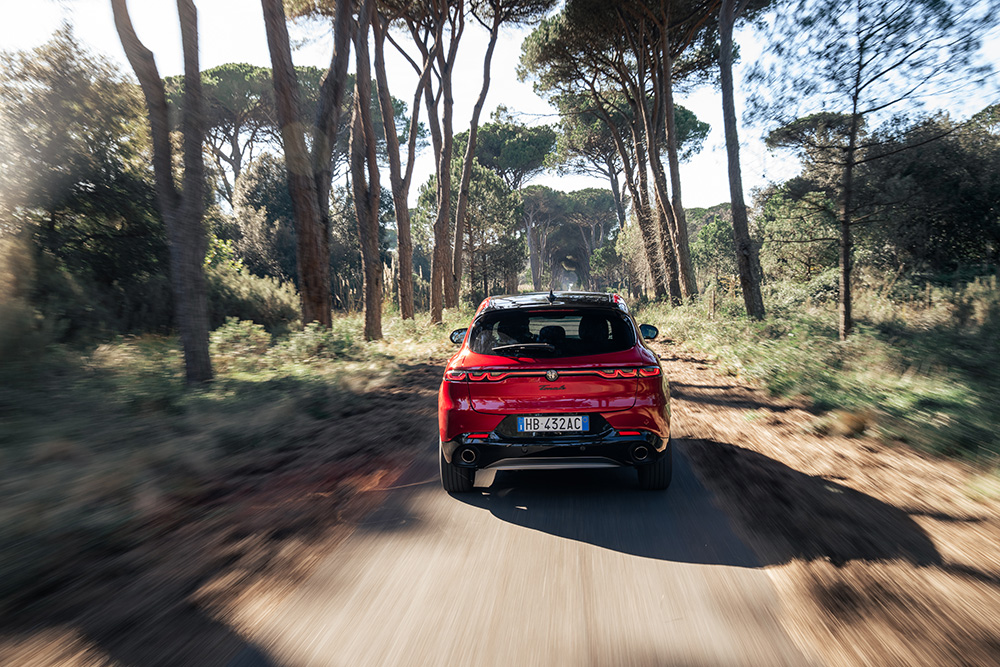
At the top sits the Veloce, identified by 19-inch Stile alloys, LED Matrix headlights, red Brembo calipers and a darkened Tonale badge. It also benefits from the clever Dual Stage Valve electronic suspension for sharper handling and improved comfort. Our test car was the limited-run Sport Speciale launch edition, based on the Veloce but given a more distinctive finish. This version features silver exterior highlights, gloss-black brake calipers and a cabin trimmed in a mix of black and white with Alcantara, giving it a more exclusive feel without straying from the car’s dynamic brief.
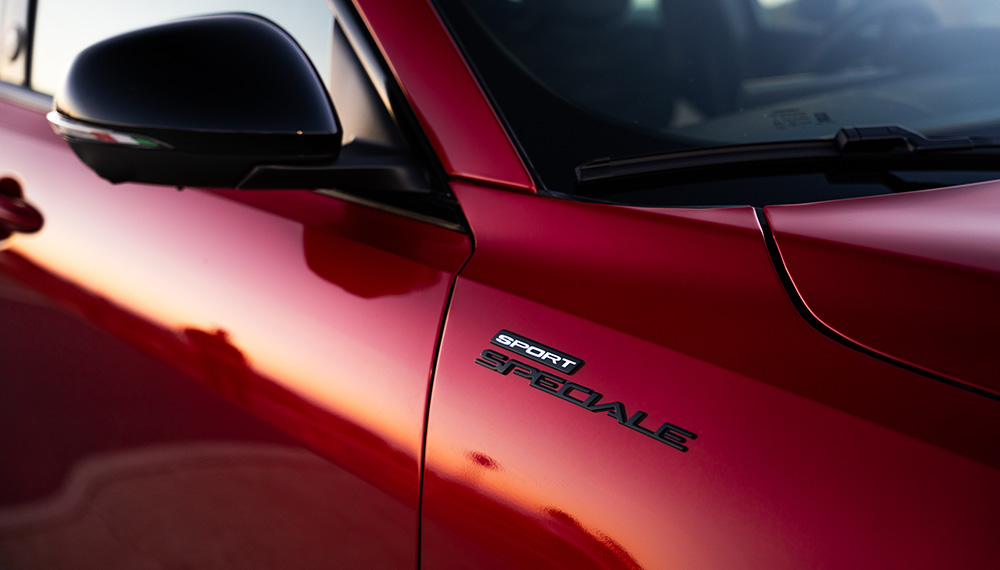
In Normal mode, the Tonale isn’t sporty, but it is cosseting – riding the bumps and lumps on some of Tuscany’s poor road surfaces well. Although the rack is the quickest in class, and darty in a way that Alfa fans will recognise, it only opens up dynamically in Dynamic mode, its most aggressive setting. The suspension firms up but it’s never bone-crushing. However, as with a lot of electric racks there’s not a great deal of feedback, even in its most dynamic mode.
Put faith in the steering, though, and the car changes direction sharply with excellent grip, even when a massive rainstorm hit during my drive. Does it thrill like a Giulia, or even a TwinSpark 156 (arguably the Tonale’s spiritual successor)? No. But compared to most crossovers, it makes a decent fist of being a sporty car, rather than outright driver’s machine. Essentially, it’s a model for daily duties and the occasional long, spirited way home, rather than a 5:00am blast to Wales. On that basis it’s a success; on the sharp and twisty descent from Volterra, it hid its 1835kg mass well and there was very little body roll. It was good fun, and seemed well suited for the tight Italian roads.
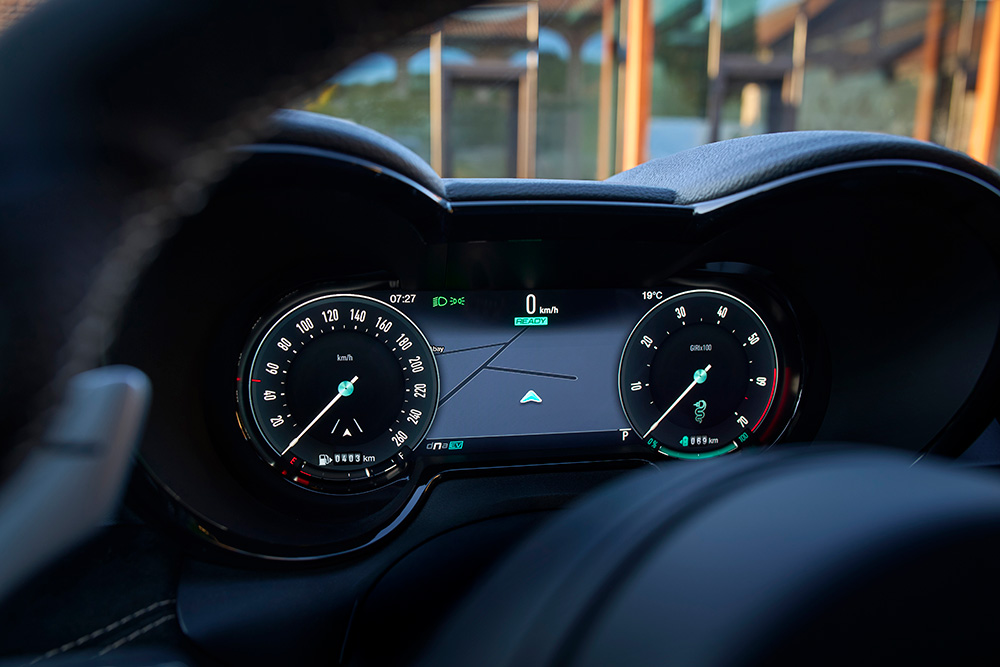
It’s a shame that the 280bhp hybrid engine isn’t just a little bit more vocal. For the sector it’s certainly got a nice shove at 4000rpm; okay, so it’s not a Stelvio Quadrifoglio but it’s what we Brits call nippy. It’ll hit 0-62mph in 6.2 seconds – around the same time as the 147 GTA of 25 years ago – but unlike that hot-hatch wild child, you wouldn’t really know. In EV mode it can go for a claimed 43 miles (far more than its closest rival, the Volvo XC40), and the 15.5kWh battery can fully recharge in two and a half hours using the onboard 7.4kW charger. All very worthy, but somewhat lacking in drama.
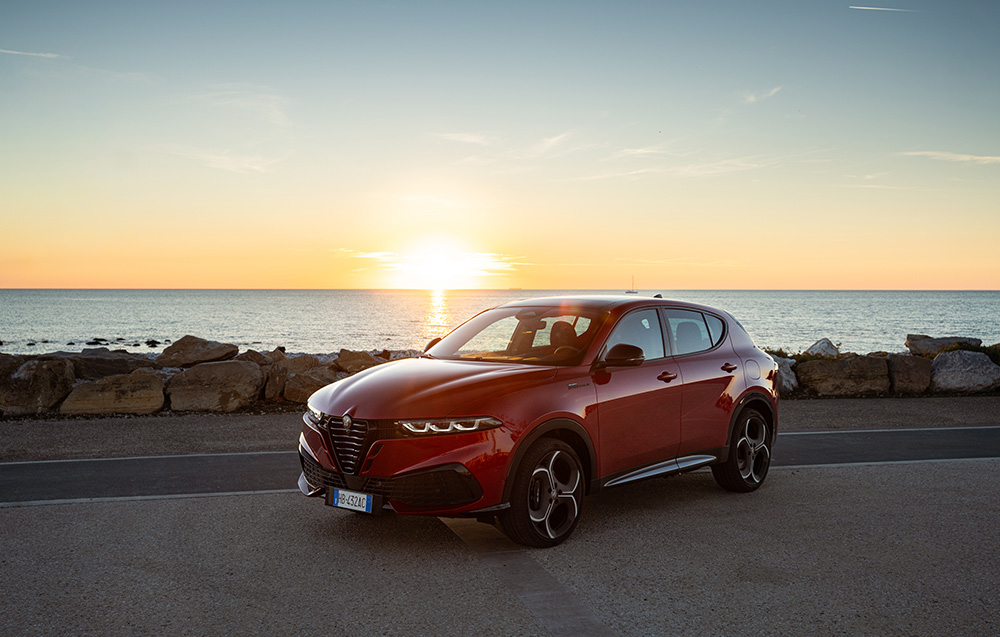
So, where does the Alfa Romeo Tonale sit in the legacy of the brand? Those who view Alfa through the prism of its most sporting models will not see much GTA in it – whether 105 series, 156/147 or recent Giulia. Instead, viewed through the lens of providing a sporty-feeling car that’s more exciting to drive than other ‘normal’ models, then the upgrades are a qualified success.
The Tonale does the major things right – it looks good, and it handles exceedingly well for a ‘normal’ car, with just the right balance between fun and everyday usefulness. In that sense, it’s a worthy successor to the 2.0-litre versions of the 156 and 147 of old – mid-segment, mid-market cars that, while not rocketships, did give you something to look forward to on the drive home.
More critically, the Tonale is a lot more fun to drive out of the box than the 159/Brera/Giulietta-era cars – so a welcome return to form in arguably the area of the market that has represented Alfa’s bread and butter for much of its life.
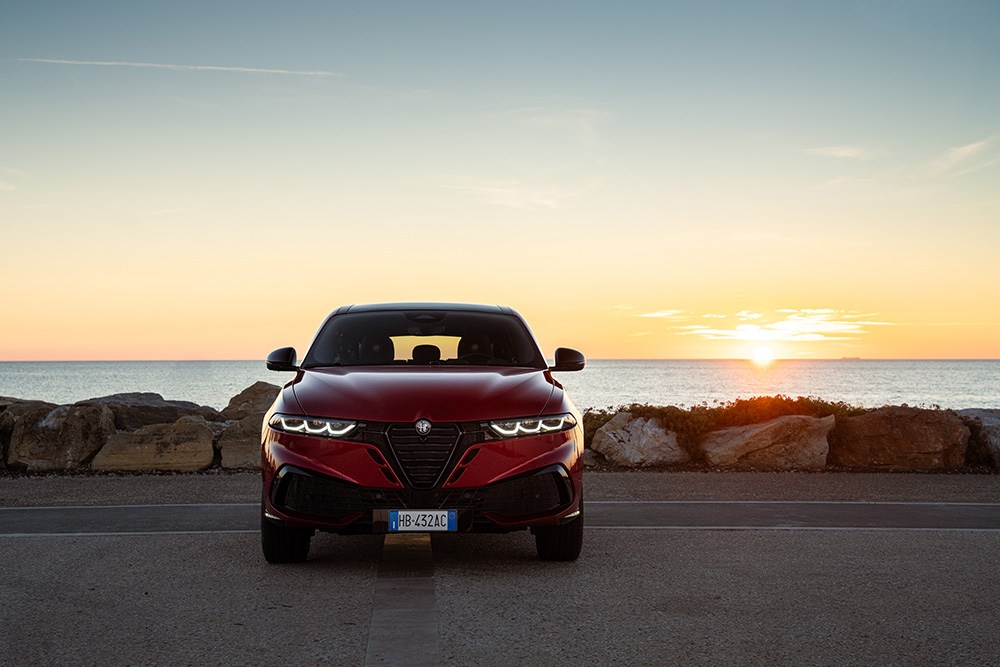
However, the Tonale does have a few flaws. Some would say it wouldn’t be an Alfa without them – but you get the feeling that these shortfalls come not from the manufacturer itself but as a result of punitive legislation. I’m not a fan of electric steering and brake by wire, while sound regulations have robbed the 1.4-litre four-pot of a pleasing rasp close to 6000rpm, but all these things are sadly a result of the world ‘normal’ cars have to live in. Considering the model was developed by the man who tuned the 8C Competizione’s exhaust note to perfection, maybe it just needs unlocking…
The Alfa Romeo Tonale is available to order now here.
